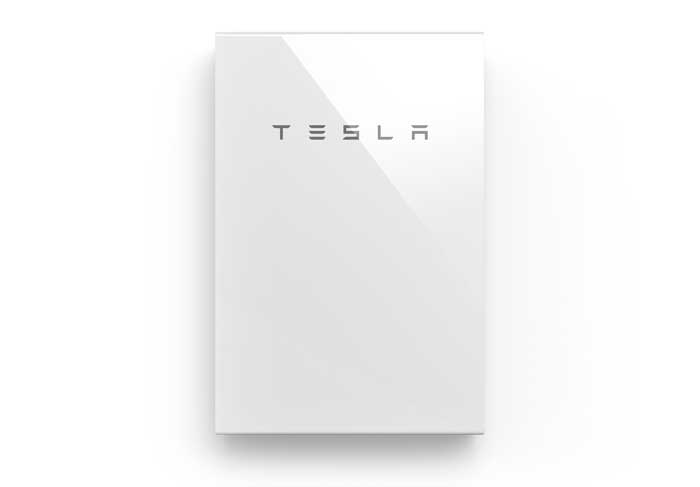As people search for a way to control their environmental impact and gain financial independence from large utility companies, solar panels are becoming more popular. Entire countries, like China, are minimizing their carbon footprint by converting to green energy.
This surge in the popularity of solar coupled with advancements in technology has caused the price of installing solar to sharply drop. For the first time, solar is both a feasible and money-saving option for most homeowners and businesses.
However, solar technology still raises a lot of questions. How do you go solar? How do you save money by going solar? How do you pick between panels? What should I look for in a warranty? And, the most common question, how do solar panels even work?
Let’s introduce you to the basics of solar panel technology, how solar panels generate energy, and how they put money back in your pocket (or keep it from leaving in the first place).
How Do Solar Panels Work?
Solar panels convert sun rays into usable energy using the photovaltic effect. Here’s how it works:
- The silicon photovoltaic solar cell absorbs solar radiation.
- The sun’s rays interact with the silicon cell, causing electrons to move.
- Moving electrons create an electric current which is captured by nodes and wiring in the panel.
- Wires feed this direct current (DC) electricity to a solar inverter which converts it to alternating current (AC) electricity, which is the type of energy needed to power your home.
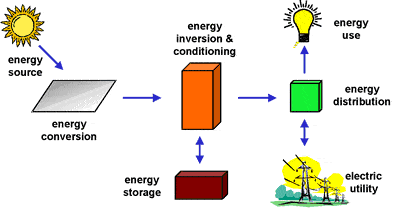
After the solar energy is collected by the panels and converted to AC energy, this is how your home or business is powered:
- It’s important to understand that solar power must either be used in real-time or stored in a battery.
- Your solar system takes the newly made AC electricity and distributes it through your home, powering home appliances and other electronic devices.
- If you have a net-metering agreement, any extra energy you don’t use is fed into the grid. That energy is then distributed through the grid to other homes and businesses, which will operate off the solar energy you collected. Your electric company will credit you for the excess energy you send to the grid, and you can use those credits to pay for energy you use from the grid when the sun is not out.
- If you have a battery installed, like a Tesla Powerwall, the excess energy your panels generate will first refill your batteries. After your batteries are full, any remaining energy will be sent into the grid.
The efficiency and endurance of your solar panels over time is determined by the quality of the components that complete this photovaltic effect. Those are the:
- Silicon Cells
- Casing
- & the Inverters.
Silicon Cells in Solar Panels
Silicon is the key to converting sun rays to electricity. It isn’t a metal but has conductive properties. That means it is able to absorb sunlight without overheating and utilize its conductive properties to create an electric current.
Solar Panel’s Glass Casing
One of the most important parts of your solar panel is the glass casing. Your solar panels should serve you well for decades and the glass is a large part of how efficient it will remain. Cheap solar panel glass clouds over time, which leads to lower solar panel efficiency. Glass casing on cheap solar panels may also crack or break, allowing water to penetrate and create a fire hazard.
Don’t worry, even though the panels are coated in glass, they are extremely tough. Tempered glass can even withstand up to golfball sized hail, does not crack during transport, and is likely to last decades.
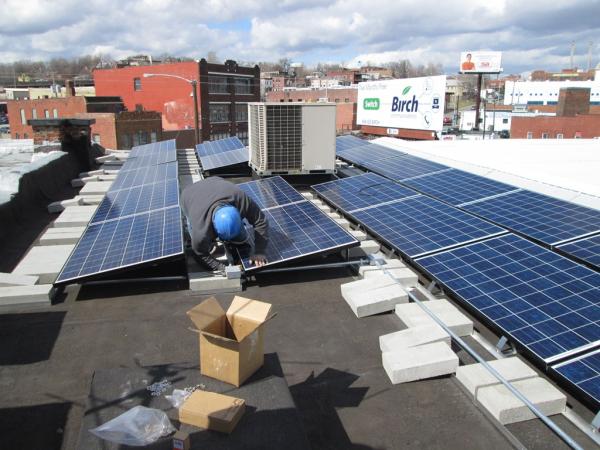
When you shop for panels, you will primarily come across two kinds of glass casings:
- Flat Plate
- and Tempered.
This should be clearly listed in the solar panel’s specifications.
Flat Plate Glass on Solar Panels
Flat plate glass is most often found on cheap brands of solar panels. They are comprised mostly of polycrystalline panels, which is the older-style bright blue panel. These solar panels are usually made by small companies you’ve probably never heard of. Though occasionally some more well-known brands of amorphous (thin film) panels have flat glass plate as well.
Because of their construction, the majority of amorphous solar panels can only use flat plate glass. Their creation usually involves applying silane gas at high temperatures directly to the back of a glass or steel plate. Most amorphous panels can only use flat plate glass due to their method of construction. Some manufacturers attempt to get around their weakness by using thicker flat plate glass. However, an amorphous panel can never be as strong as a solar panel that utilizes tempered glass. It will never have the same level of durability and therefore diminishes your investment.
Tempered Glass on Solar Panels
What you want is a solar panel with a tempered glass solar panel casing. Tempered glass can be up to six times stronger than normal glass. Solar panels that are made with tempered glass are sturdy, not likely to break, and therefore a much better investment than the aforementioned solar panels.
The other plus you get with a tempered glass solar panel is better safety features. In the rare case that your solar panel with tempered glass is damaged, it will shatter into small pieces opposed to long, razor sharp shards. This makes tempered glass solar panels a much safer option for your family or business.
While SunSource has a variety of panels available to help maximize your savings, we make sure all of our panels come from highly reputable, established, well-known manufacturers with excellent warranties. All our panel options are therefore of the toughest and highest qualities.
☀️ USE OUR FREE CALCULATOR | See how much you could save with solar.
Solar Panel Inverters vs. Microinverters
Inverters are attached to the panels, where they collect the sun’s energy and convert it into usable energy for your home or business.
There are three main kinds of inverters you’ll find within your solar systems. Despite what a salesman may tell you, these inverters are NOT equal in any way:
- Microinverters (BEST!)
- String Inverters with Power Optimizers (GOOD)
- String Inverters (AVOID THESE)
String Inverters on Solar Panels
The least productive and reliable inverter option is a string inverter. To understand how string inverters work, let’s imagine it’s Christmas time.
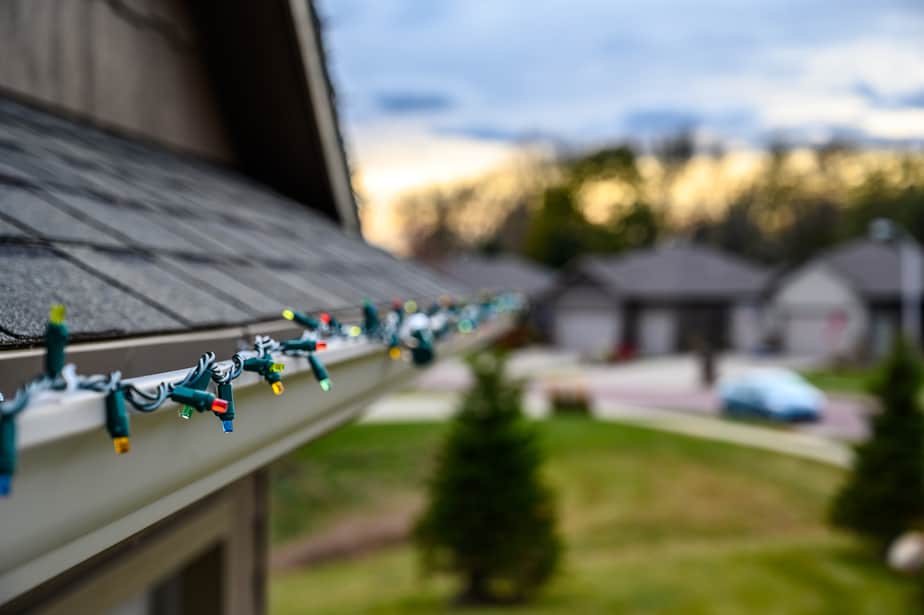
You’re putting up your tree. You finish off the decor by wrapping your tree with string Christmas lights. Maybe you trim your roof with string lights, too. You reach down to plug in the lights. They all shine beautifully. All of a sudden, your lights flicker, then go out. One bulb somewhere in those string of lights is blown. Now, instead of enjoying your gorgeous display, you must meticulously check each bulb to figure out which one is the culprit.
That’s how string inverters work on solar panels.
When you have a solar system that relies on a string inverter, your panels are dependent on each other for generating energy. If one solar panel is shaded or malfunctions, all of the panels’ productions take a hit. On top of that, because all the solar panels’ productions are connected to each other, it is difficult to diagnose which panel in the solar system is under-performing. Clearly, this is not favorable. There has to be a better way! Well, we have good news. There is.
They’re called microinverters.
Microinverters on Solar Panels
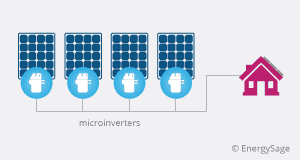
Microinverters solve the problem of digging through your string lights to find the broken bulb. When you use microinverters, each individual panel is fitted with its own microinverter. This means that each solar panel converts solar rays into usable energy independently. By setting up your system so each solar panel converts energy independently, your system will perform the best it can at any given time.
So, if a cloud shades one panel, the rest of your panels keep producing. And that issue with diagnosing problems within panels? Gone.
SunSource uses the FEMA-recommended Enphase microinverters. On top of that, we supply each of our customers with an Enphase monitoring system. With the Enphase monitoring system, you can log into your personal portal and see how each panel in your system is performing at any given time. You can also see the impact you are having on the environment (like how many trees you’re saving).
Even better, SunSource can track your system, too. So, if you have an issue with your solar system, just let us know using our customer portal. Then we remotely diagnose your problem, order whatever parts you need, and install it. All of this is covered in our standard warranty (specific details vary).
Some solar companies will try to tell you there is no difference in value between a microinverter and an inverter. Or, they’ll try to tell you that fitting a string inverter system with a power optimizer is the same thing. These statements are false.
Power Optimizers on Solar Panels
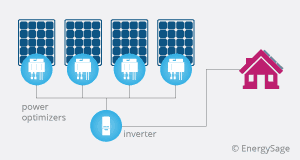
Power optimizers are viewed as a slightly less expensive alternative to purchasing microinverters. You can view them as the compromise between the low-end string inverter and the higher-end microinverter.
So how do they work? Just like microinverters, a power optimizer is fitted to each panel. From here, power optimizers “condition” DC electricity to AC electricity at the panel site. Then, the power optimizer sends the electricity to a string inverter.
Microinverters complete the electricity conversion process at the panel level instead of sending that energy somewhere else to be converted. This makes the process quicker and more efficient.
Both microinverters and power optimizers reduce the impact of solar panel shading on a system’s performance. Both also offer panel-level performance monitoring. However, power optimizers have an extra conversion step. Microinverters have this conversion built into them at the individual panel level.
☀️READ | More details about the differences between inverters.
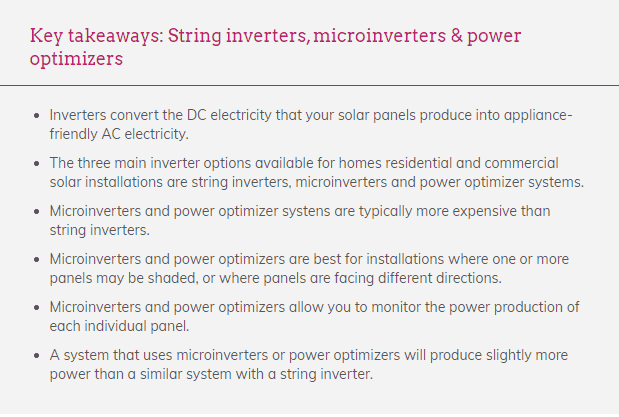
Using Net-Metering Agreements with Solar Panels
For economical reasons, the majority of today’s homeowners elect to stay tied into the grid. If they continue to purchase power, then how do they save money? It’s simple. They get a net-metering agreement with their power company.
Net-metering is a way for you to sell your excess energy to your energy company. In exchange they allow you to use the grid as backup power.
Here’s how a net-metering agreement works:
- When you choose to net meter, your home remains connected to the electricity grid that powers your area.
- Energy your solar panels generate when it’s sunny is used directly by your home.
- After you’ve powered your home or business, your excess solar energy is sent into the grid.
- The electricity is distributed to neighboring homes and businesses, and your energy company pays you for your contribution in the form of credits.
- At night, when your panels aren’t soaking up sun, you cash in your credits.

The goal if for your home to be close to net-zero, meaning you generate as much energy as you consume leaving you with an energy bill of zero each month.
Generally speaking, this turns out to be an average close to zero. Some months, like in the summer, you may even receive a negative bill like this SunSource customer did.
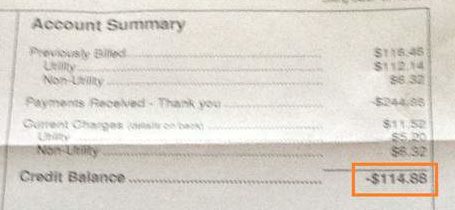
During times where it is cloudy, you may receive a bill that is low but is not exactly zero, like this SunSource customer.
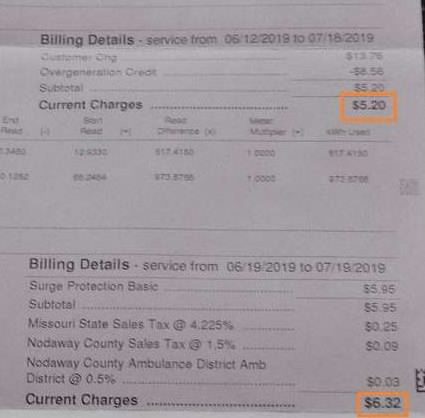
To complete your net-metering agreement, your energy company will switch out your standard meter with a bi-directional meter. A bi-directional meter can count up and down. Standard meters only count up. Your new meter will measure how much electricity you draw from the grid and how much energy your solar panels send it.
In the past, these were analog meters that allowed you to watch the needles spin backwards.
Today, the bi-directional solar meter you would receive is digital. While it’s not as fun as watching the needle spin counterclockwise, you can still have fun watching your savings as the numbers count down.
How to be net-zero with your solar panels
Your solar system should be designed so that you consume as much energy as you create (net-zero). The key to achieving this is having an excellent team of engineers design your system. The better they can predict your energy usage trends, the closer to zero your energy bills will be.
When you get a quote your solar installer will analyze your last 12 months of usage. If you have recently moved into your home they will use as much history you can provide. Then they look at your household’s or business’ energy trends, and environmental factors that will affect the type of system they build, including available roof space, nearby shading, and more. Using this analysis, the solar installer will recommend how many solar panels you need to offset your usage.
SunSource utilizes Aurora to ensure the accuracy of our quotes. That’s the same technology trusted by Google themselves.
☀️ FREE DOWNLOAD | Solar Quote Comparison Checklist. No email address needed.
There’s a lot to consider when going solar. Use this free solar quote comparison checklist to make sure you don’t miss any of the tiny details.
☀️READ | How to Compare Solar Quotes: The Essential Guide.
Solar Panels with Battery Storage
Even if you choose to utilize a net-metering agreement, you may still wish to capture more of the energy that your solar panels produce. That’s where battery storage comes in.
When you add a battery to your solar system, your system will first charge your battery. After the battery is topped off, the overflowing energy is sent into the grid and stores up credits for you.
A popular battery solution right now is Tesla Powerwall. SunSource is a certified Tesla Powerwall installer. However, we also offer other power saving options available like sonnenBatterie.
That’s the basics of how solar panels work. However, there are several other factors you need to take into consideration before purchasing solar panels.
Your Solar Panel Installer
Just like solar panels, all solar installers are not created equal. One of the most important factors to consider when choosing your installer is their longevity.
With the announcement of the federal solar tax credit and many local solar incentives, the demand for solar rose. This caused an influx in pop-up solar companies – solar panel installers that aim to capitalize on the current demand. We call them pop-up companies because in 2 years or so they’re gone. They’ll offer you low prices and warranties. Then they disappear as soon as rebate money dries up. Their customers are stuck with a warranty they can’t use and no help in maintaining their solar systems.
SunSource was established in 2011 and is here to stay. We’ve installed and currently monitor over 500 systems. That’s not an easy feat and it’s not something every solar company can say.
☀️READ | How to Choose a Solar Company You Can Trust
Your Solar Panel Warranty
It is imperative that you double check your solar warranties before making a final decision. A product is only as good as its guarantee after all. When reviewing your warranties, there are three main areas you need to compare:
- Equipment
- Power Production
- Labor and Workmanship
You can read more about comparing warranties here.
Solar Panel Incentives Available in Your Area
You can improve your rate of return on investment by taking advantage of your local solar incentives. Check out DSIRE’s website for a full list of solar incentives by area.
Want to learn more about the basics of solar? Here are a few articles to get you started.
How to Compare Solar Quotes. The Essential Guide
5 Things Every Home And Business Owner Should Know Before Going Solar.
Federal Solar Tax Credit: How It Works Explained in Plain English
Solar Myth Busters: 10 Common Rumors
Do Solar Panels Work When It’s Snowing?
10 Questions to Ask When Buying Solar Panels
How to Choose A Solar Company You Can Trust
Visit our Solar 101 section for more
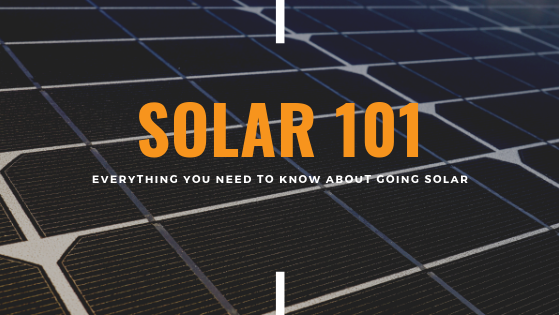
Written by: Charmaine Merriweather
